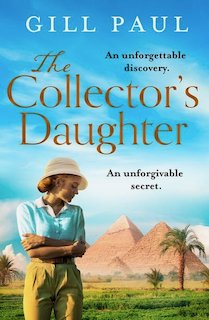Interview with UK best-selling author Gill Paul of 'The Collector's Daughter'!
Author Gill Paul of The Collector’s Daughter with holding the UK cover version.
The Collector’s Daughter is available in Australia on February 2, 2022 through HarperCollins Australia. Read review here.
Australian Cover Version
It is my pleasure to welcome best selling author Gill Paul as a guest on my website to discuss her latest novel and writing history. Her books came highly recommended to me by friend Kathleen McGurl—another amazing dual time line author from the UK. I can see why Kathleen loves her stories as they are well crafted and filled with deeply moving themes, characters and plots.
📚 📚 📚 📚 📚
Interview with Gill Paul – The Collector’s Daughter
💼

